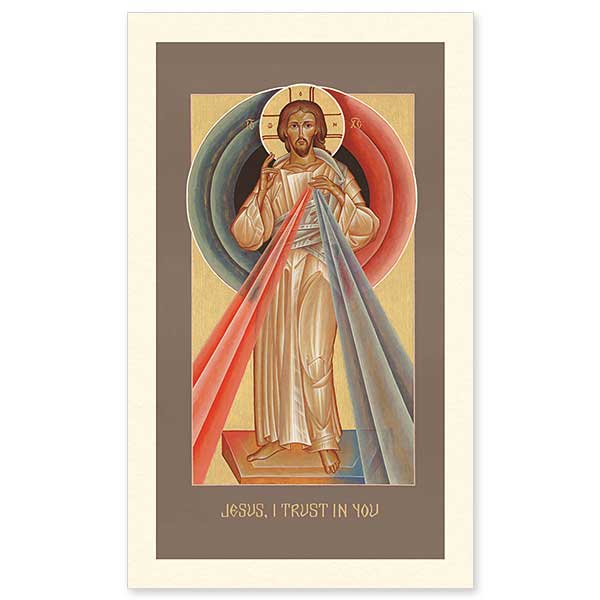

| Cards as shown (No Imprinting) | |||||
| Item Number | Description | Price Each | Quantity | Total | Action |
|---|---|---|---|---|---|
| PCQ501 | Package of 25 icon holy cards |
$8.50 |
package |
$8.50 | |
| Item Number | Select Imprinting option: | Price Each | Quantity | Total | Action |
|---|---|---|---|---|---|
| Not Selected |
|
|
cards 30 piece minimum. |
On February 22, 1931, Saint Faustina Kowalska experienced a vision of Christ dressed in white with two beams of colored light shining forth from His heart. Christ told the saint to paint what she saw, that people might venerate Him and know of the Divine Mercy ready for all who turn to Him. This icon was written by Father Pachomius Meade, O.S.B., a monk of Conception Abbey.
Icon holy cards are 3" x 5", a convenient size for use as gifts or bookmarks. The backs are blank except for a faint colophon at the bottom, leaving plenty of room for custom imprinting with your own message.
Shortly after entering the convent, the Polish nun Sister Faustina Kowalska began to have mystical visions of Jesus. She recorded all of these in her diary. On February 22, 1931, she experienced a vision in which she saw the Lord dressed in white while two beams of colored light shone forth from his heart. Christ told the saint to paint what she saw, that people might venerate him and know of the Divine Mercy ready for all who turn to him. Sister Faustina had several artists attempt to portray this image of Christ’s mercy according to her description. None of the depictions ever met with her satisfaction; thus today, while the image of Divine Mercy is instantly recognizable, subtle variations persist based on various representations of her account of the apparition. In 2000 Pope John Paul II canonized Sister Faustina as the first saint of the new millennium. He proclaimed the second Sunday of Easter “Divine Mercy Sunday.” The Divine Mercy Chaplet is linked to this image of God’s love and compassion for all who turn to him. Since Poland borders Russia, the styling of this Divine Mercy icon has an eastern flavor. It contains all the imagery described by St. Faustina, done in Byzantine-Slav style. It borrows imagery from icons of the Transfiguration in order to communicate the idea of heavenly light.